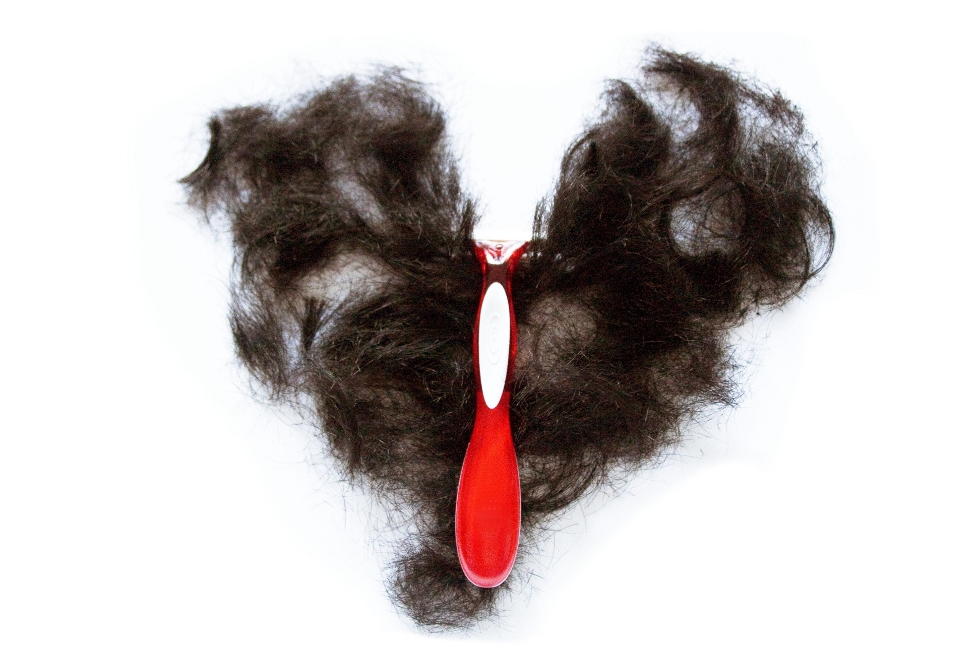“Beaver!” “Beaver up the stairs.” Some guy in chinos at my Los Angeles public high school would shout out as an up-skirt view opened on a staircase. In the 1960’s, a high school girl’s pubic hair marked the site we all wanted to see, to touch, to enter. Pubic hair was iconic. It marked pleasures yet to come. We all hoped to get there.
In the avant-garde literature of those days, pubic hair was everywhere. In a hallucinatory scene in William Burroughs’ Naked Lunch, finally published here in 1962, Johnny has just doused himself and Mary with gasoline. “He is a boy sleeping against the mosque wall, ejaculate wet dreaming into a thousand cunts pink and smooth as sea shells. Feeling the delight of prickly pubic hairs slide up his cock…..”
Not today.
“He’s never seen it,” a friend recounted to me about his good-looking, sexually active collegiate son.
What, I asked?
“Snatch,” he replied. “It’s like a princess phone. He sleeps with girls all the time. He’s never seen a woman’s pubic hair.”
My years of “third-base” are now a half-century past. Just like the rain forest and the ozone layer, pubic hair has been disappearing on young, fertile, desired and desiring bodies as my own body has aged.
I think you can see the world from down there, or at least now that the bush is being cleared, how our world has changed. Emile Durkheim, the French founder of sociology, took intimate moments—acts of suicide in his case—as a way to gauge the state of social solidarity. We can do likewise with the waxing, shaving, sugaring, plucking and even lasering of female pubic hair. Its disappearance tells us something about womanhood, the state of love, the human and the relation of body and soul. Pubic practices are rites by which we construct who we know ourselves to be. What are they telling us?
What began as a following of the inward movement of the bikini line—maxing out with the thong—has morphed into removing all a woman’s pubic hair. The shearing is accomplished with disposable razors or increasingly via the Brazilian wax, in which hot wax is applied with sticks, then cotton cloths are laid down on top of it and ripped away, taking it all off front and back, right down to the soft little hairs subtly cloaking the bottom. The shave—with quick, rough re-growth and ingrown hairs—can require almost daily attention. The wax lasts four weeks or so, but it hurts, women report, particularly that very first time. The cheaper the version, the more the pain: The less expensive, low-grade product takes off the first layer of your skin with the hair. Salons hand out rum shots and apply numbing creams; clients take drugs and anti-inflammatories to get through it; women do breathing exercises and shout out profanities. As the hot wax gets ever closer to the center stage, the pain level rises. Some women cannot bear it. The waxing of the mons has become a feminine frontier, a marker of one’s ability to endure pain for the sake of beauty.
Beverly Woxell, a tall voluptuous mother of two and a well-known aesthetician in Santa Barbara where I live, had to go up to San Francisco to learn to do the Brazilian wax: It had been forbidden at the beauty college where she obtained her training. When she put it on her menu in 2002, she intended it as a sideline to facials and massage, but a new generation of college women looking to partake in the casual carnality of the hook-up scene, mobbed her practice. Now she does Brazilians all day long.
The young women want, she explains, to be ready for sex, “to be hip, and cool and in the know. They want to look the part, act the part.” They’ve seen the super models who are freshly waxed before putting on the expensive bathing suits and lingerie. “We all want to think,” Woxell says, “that we are a little, tiny bit like that.” It is, she argues, just like a designer bag. “Every girl wants to have Louis Vuitton or designer sun glasses or that one designer purse.” Today, Woxell says, if young women have a casual, un-waxed sexual encounter, they are afraid “it might ruin your reputation.”
The thirty and forty year-old mothers have followed in their wake. “They take their panties off and it is like Jack in the Box,” she says. “Come on its Valentine’s Day, “she cajoles them, “let’s see what the shock factor is with your husband.” Often they can’t do the whole thing. They want to keep a “landing strip” or a “Dorrito chip.”
“‘I can’t look like my twelve year old,’ they say.’”

Page 1 of 4 | Next page
